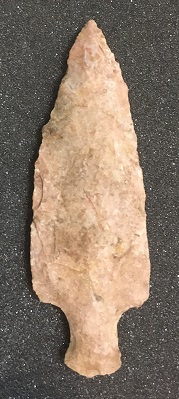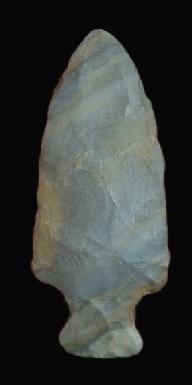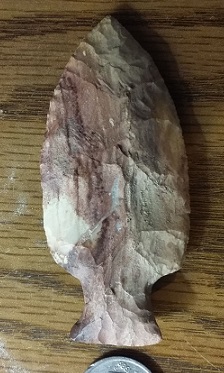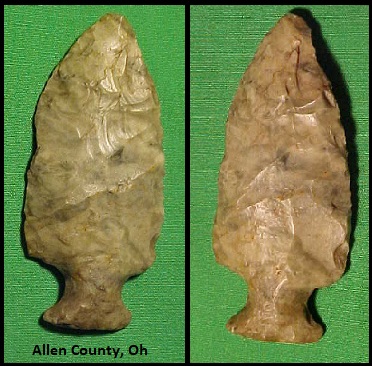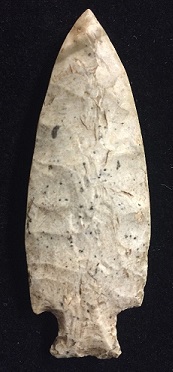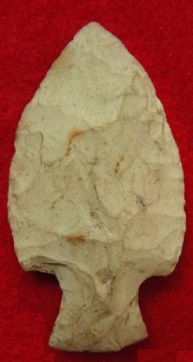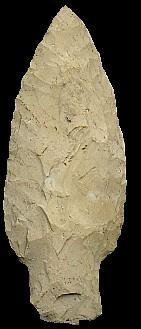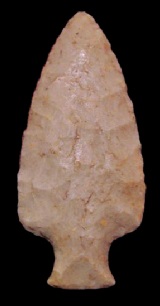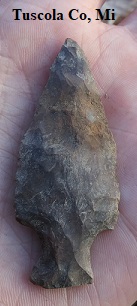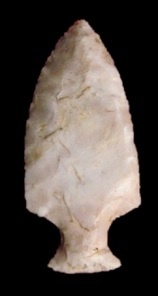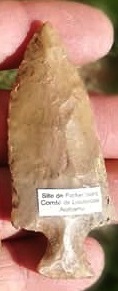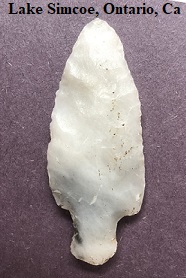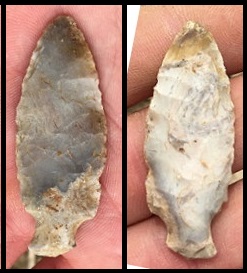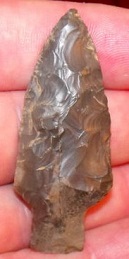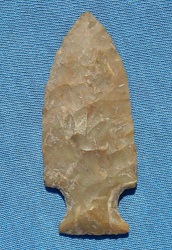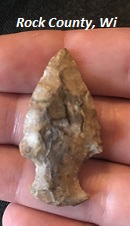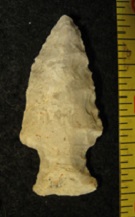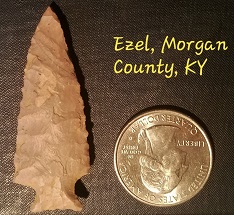Name Details:
Named By: Robert T. Bray
Named For: Type Site location
Date Identified: 1956
Type Site: Rice Site, Table Rock Reservoir, Stone County, Missouri
Table Rock
Cluster: Table Rock Cluster
Commonly Utilized Material:
Various local heat treated cherts. In Iowa Maynes Creek
Chert and Prairie du Chien Chert are the most common material (Morrow,
2016).
Date:
Cultural Period:
4,000 -3,000 B.P.
Late Archaic
Neoglacial
Glacial Period:
Culture:
Outline is Representative of Size and Shape:
Description of Physical Characteristics and Flaking Pattern:
This is a medium to large triangular expanding stemmed point. The cross section may range from a thick elliptical to being plano-convex. The blade is excurvate with wide rounded notches. The shoulders are most commonly sloping upwards, but
some examples may have horizontal shoulders. The stem may vary from slightly expanding to expanding
and has a narrow neck. The base may range from straight to convex
with heavy basal and lateral edge / hafting region grinding present. This point
is manufactured using random percussion flaking with invasive trimming
and retouching pressure flaking forming a random flaking
pattern.
Size Measurements: Total Length - 35 to
100 mm (average 50 to 60 mm), Stem Length - 11 to 17 mm, Blade
Width - 20 to 35 mm (average 25 to 30 mm), Neck Width - 9 to 18
mm, Stem Width - 13 to 21 mm, Thickness - 4 to 8 mm
Distribution:
Distribution Comments:
This point is primarily found in the mid to upper Mississippi River valley and into the Ohio River valley and Missouri River valley. This point may be found with less frequency into the Tennessee River
Valley. University of Minnesota reports that this is a common type throughout Minnesota.
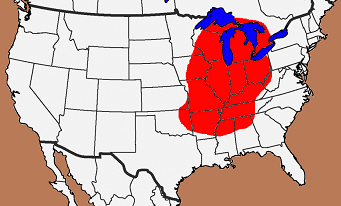
Related / Associated Points:
Additional Comments:
Justice (2002), identifies the difference between the Table Rock and the Bottleneck point as the Table Rock is larger, wider, and less defined.
Waldorf and Waldorf (1987), feels that the Table Rock and the Bottleneck point may be the same point, or that the Bottleneck point may be a regional variant of the Table Rock point.
The Koster and Apple Blossom points have similar characteristics, but
smaller.
The University of Minnesota identify the Table Rock as a larger thicker point while the Bottleneck point are smaller with large round notches and with finer pressure flaking. They list the distribution of the
Table Rock as being further west and the distribution of the Bottleneck as being further east.
This point is similar to the Motley type. The notches on the Motley type generally enter the preform from the corner leaving a shoulder that is horizontal to slightly barbed while the Table
Rock notches enter
the preform more from the side leaving a shoulder that is horizontal to having an upward angle and is commonly rounded.
Other points in this Cluster:
Point Validity: Valid Type
Bray was a professional archaeologist serving as Chief Archaeologist for the Park Service and an expert in the archaeology of Missouri. This point was named in a professional
publication and has many professional references. This is considered a valid type.
.
Age Details:
References: (See Reference Page, Entry Number):
23, 30, 37, 168, 179, W2
Table Rock Projectile Point, Table Rock Arrowhead

